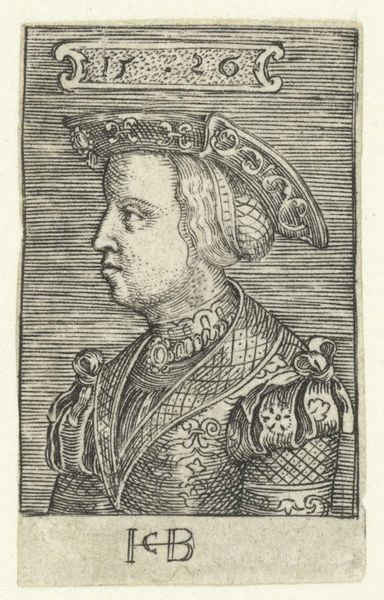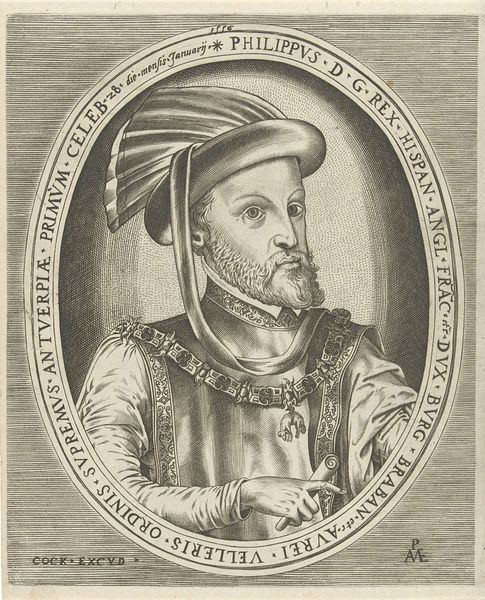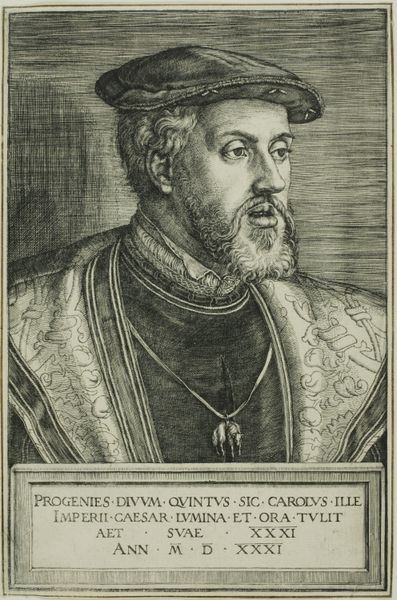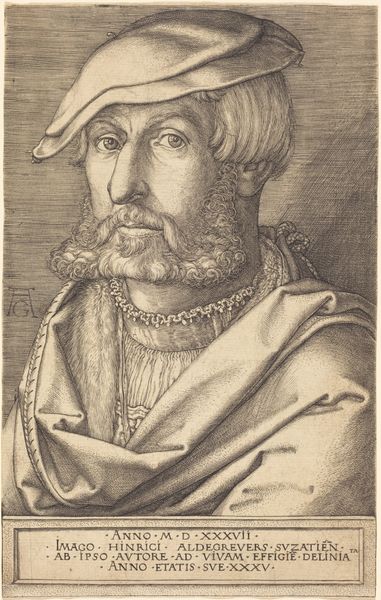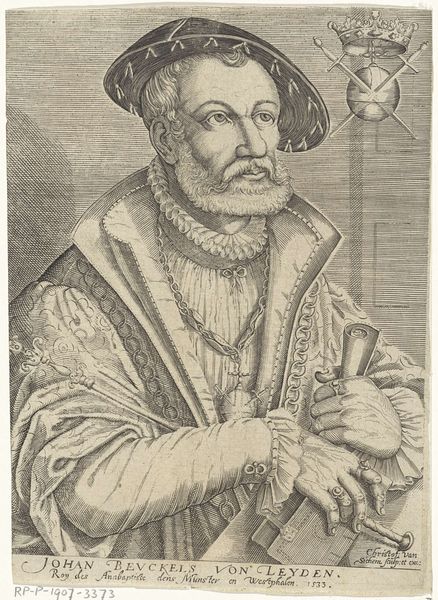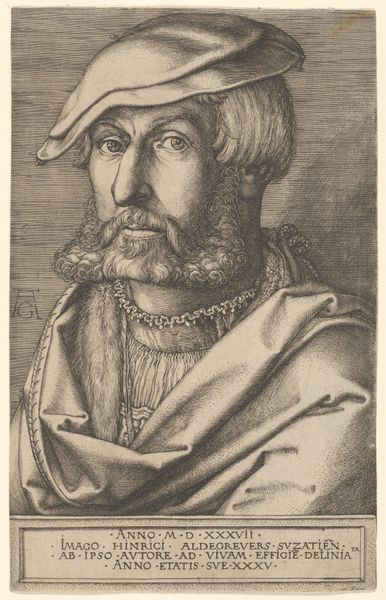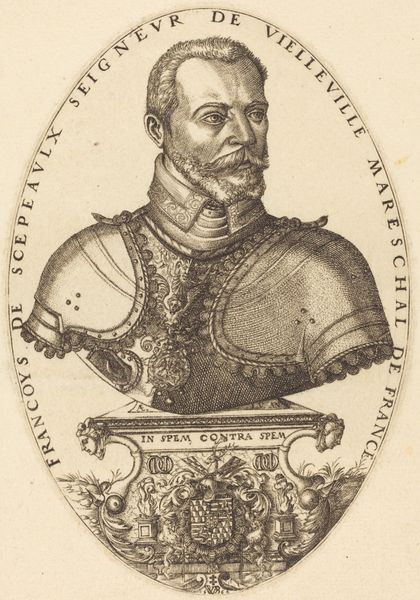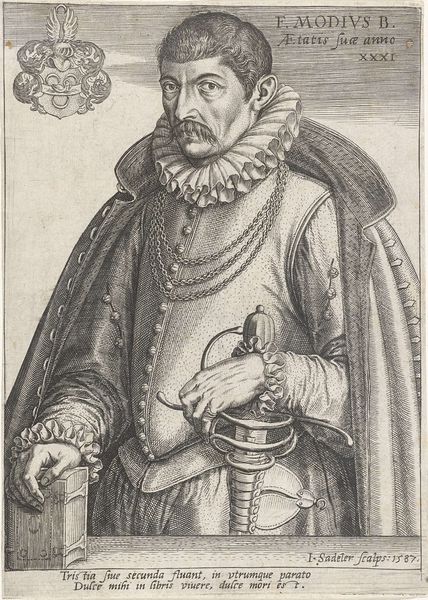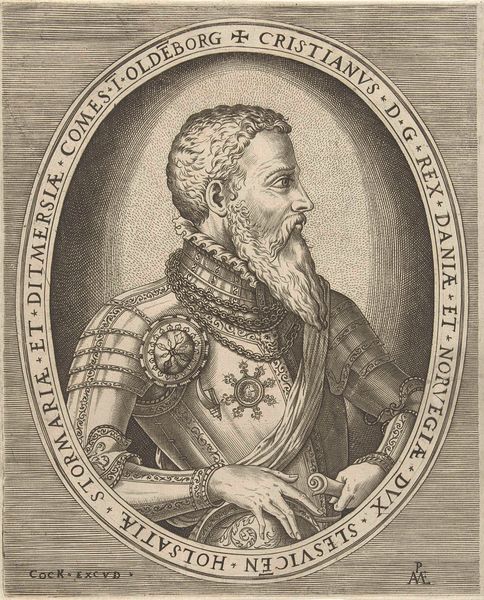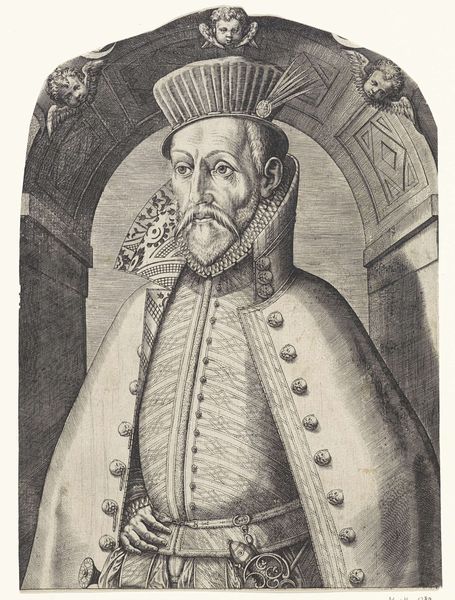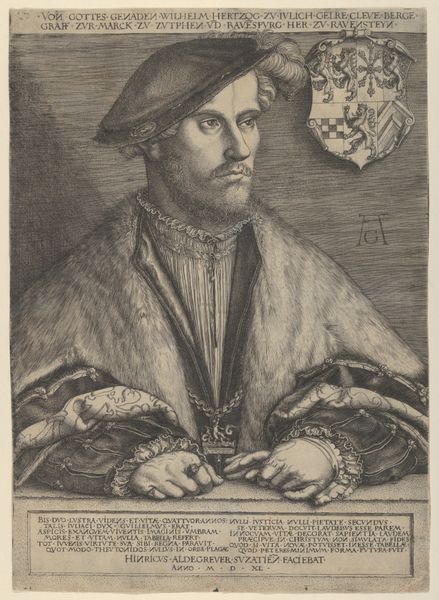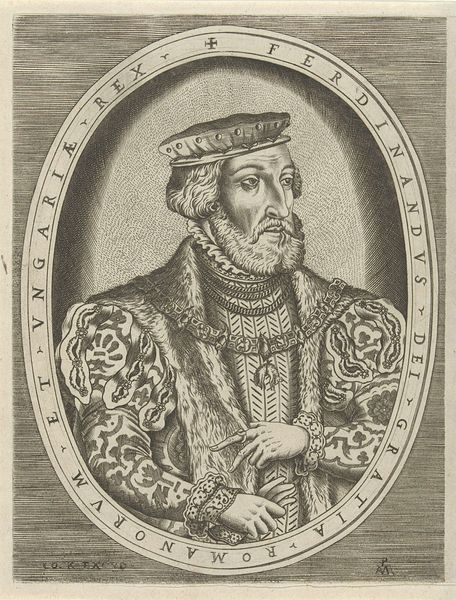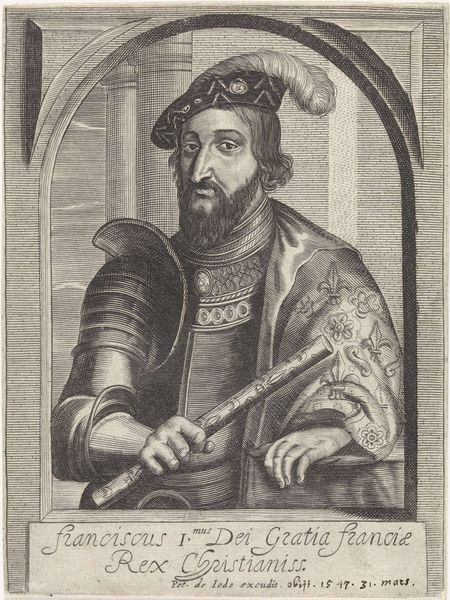
Portrait of the Holy Roman Emperor Charles V facing right 1515 - 1525
0:00
0:00
drawing, print, engraving
#
portrait
#
drawing
# print
#
11_renaissance
#
men
#
history-painting
#
northern-renaissance
#
engraving
#
profile
Dimensions: sheet: 8 1/4 x 6 1/4 in. (20.9 x 15.9 cm)
Copyright: Public Domain
This portrait of Charles V, Holy Roman Emperor, was created by an anonymous artist using pen and ink. The image makes clear Charles’s status through the finery of his clothing and his prominent chain of office. The double-headed eagle in the upper-right corner is a clear visual code referring to the Imperial office. This portrait, likely created in the 16th century, reflects the politics of imagery prevalent at the time. Charles V ruled over a vast and diverse empire. The proliferation of portraits like this one – through prints or drawings – was a way to convey an image of power and control to far-flung subjects. Consider how such images helped to consolidate power in early modern Europe. Archival records might reveal who commissioned the portrait and how it was distributed. By understanding the social and institutional context, we can gain valuable insights into the role of art in shaping historical narratives.
Comments
No comments
Be the first to comment and join the conversation on the ultimate creative platform.
